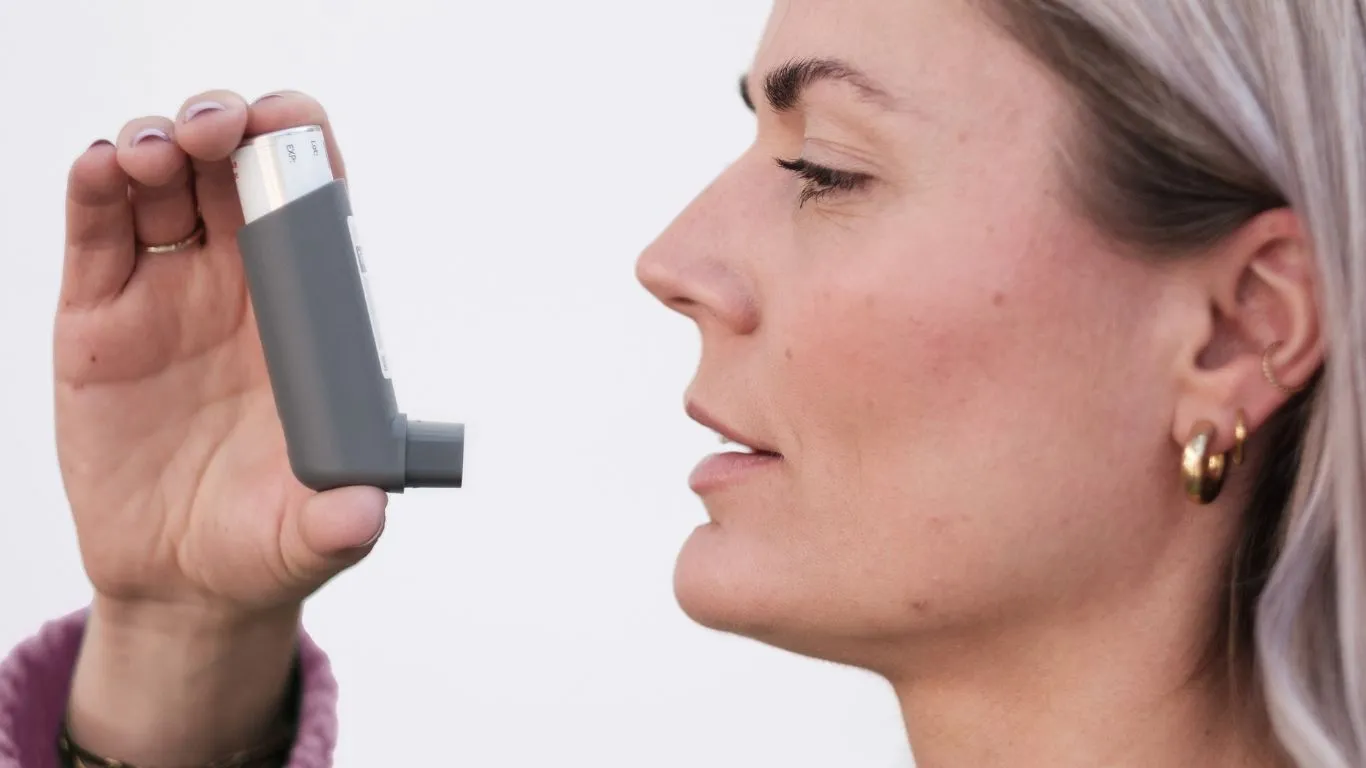Is Asthma Always Linked to Allergies? Discover the Truth Behind It
Is asthma always linked to allergies? That’s a question I get asked almost weekly in clinic — and honestly, it’s a great one. As a pulmonary nurse practitioner who’s spent years helping patients manage their breathing, I’ve seen just how confusing the connection between asthma and allergies can be. Some people wheeze and cough every spring like clockwork, others react to dust or pets, and then there are those who have asthma flare-ups without a single sniffle or rash in sight. So let’s clear things up, shall we?
Understanding the Basics: What Really Is Asthma?

Before we dive into the allergy connection, let’s quickly talk about what asthma actually is. At its core, asthma is a chronic inflammatory disease of the airways. When someone with asthma encounters a trigger — which could be anything from cold air to cigarette smoke — their airways become swollen and narrowed. This makes it harder to breathe and can lead to symptoms like:
- Shortness of breath
- Chest tightness
- Coughing (especially at night or early morning)
- Wheezing
Now here’s the kicker: not all asthma looks the same. That’s part of what makes it so tricky. Some people only have symptoms when they exercise (exercise-induced asthma), while others might only have attacks during allergy season or after exposure to allergens like mold, dust mites, or pollen. This is where the confusion often starts.
So, Is Asthma Always Linked to Allergies?

This is the big question — and the answer isn’t a simple yes or no. There’s actually a term for asthma that’s triggered by allergens: allergic asthma. It’s the most common type of asthma, especially in kids and young adults. If your asthma symptoms get worse around things like pet dander, pollen, or mold, there’s a pretty strong chance allergies are playing a role.
But — and here’s where it gets interesting — not all asthma is allergic. I’ve cared for plenty of patients over the years whose asthma was completely unrelated to allergies. For example, I once had a patient named Dave (not his real name) who had asthma flare-ups triggered by cold air and stress. No allergies, no itchy eyes, no sneezing. Just pure bronchial chaos when the temperature dropped or life got hectic. That’s what we call non-allergic asthma.
What’s the Difference Between Allergic and Non-Allergic Asthma?
It mostly comes down to what’s triggering the inflammation in your airways. In allergic asthma, your immune system reacts to allergens, and part of that reaction causes your airways to tighten up. These folks often have a history of seasonal allergies, eczema, or food sensitivities.
Non-allergic asthma, on the other hand, is usually triggered by things like:
- Cold air
- Respiratory infections
- Exercise
- Air pollution
- Strong odors or perfumes
- Stress and emotions
These patients typically don’t test positive for allergens and don’t get relief from traditional allergy treatments like antihistamines or allergy shots. Their asthma is driven by different mechanisms — often involving innate immune responses or neural pathways that still aren’t fully understood.
Why So Many People Confuse Asthma With Allergies

This confusion is totally understandable. A lot of the symptoms overlap — sneezing, coughing, tight chest, even fatigue. Plus, allergic asthma and seasonal allergies often show up together, especially in kids. Parents might bring their child in thinking they have a cold that won’t quit, when in reality, it’s their first asthma flare brought on by spring pollen.
Another layer of complexity is how closely asthma and allergic rhinitis (a.k.a. hay fever) tend to coexist. In fact, studies have shown that over 60% of people with asthma also have allergic rhinitis. That’s a huge overlap, and it’s no wonder the two conditions often get lumped together.
From the Clinic: Real Talk from My Pulmonary Practice
Let me tell you — I’ve had patients who only realized their asthma was allergy-related after years of misdiagnoses. One teenage girl I treated had “chronic bronchitis” for two years before allergy testing finally revealed she was severely allergic to her family’s cat. Once they rehomed the cat (tough decision, I know), her asthma practically disappeared. She didn’t even need her rescue inhaler anymore!
But then there are those patients like Sam, a 40-something marathon runner, who has zero allergies and still deals with bronchospasm during cold-weather runs. No amount of Claritin was going to help him — but a bronchodilator before workouts? Total game changer.
All that to say: asthma isn’t one-size-fits-all. And it’s definitely not always linked to allergies.
How Do Doctors Know If Asthma Is Allergy-Related?

This is where a little detective work comes in. Diagnosing whether asthma is linked to allergies isn’t just about symptoms — it involves piecing together a puzzle of medical history, physical exams, and often, testing. In my clinic, I always start by asking detailed questions:
- When do your asthma symptoms flare up?
- Do you notice issues after exposure to pets, pollen, mold, or dust?
- Do you also have eczema or hay fever?
- Is there a family history of allergies or asthma?
If there’s a suspicion of allergic asthma, the next step is usually allergy testing. That might be a skin prick test (where tiny amounts of allergens are introduced to the skin to check for reactions) or a specific IgE blood test, which looks for immune responses to common allergens.
Sometimes, I also recommend a spirometry test. It’s a fancy name for a simple breathing test that measures how well air moves in and out of your lungs. If someone’s numbers dip after exposure to known allergens, that can be a pretty strong clue that asthma and allergies are holding hands.
What If the Tests Are Negative?
This happens more often than you’d think. Not everyone with asthma has positive allergy tests. I’ve seen patients who were convinced their asthma was triggered by dust, only to find out it was actually humidity and mold — two things that can act as irritants even in non-allergic asthma.
In these cases, we might dig deeper and look at other triggers, from air pollution to strong scents to respiratory infections. Non-allergic asthma tends to respond better to standard asthma medications rather than antihistamines or immunotherapy.
Managing Allergic Asthma vs. Non-Allergic Asthma

One of the biggest questions my patients ask is, “If my asthma is allergy-related, does that change how we treat it?” The short answer? Yes — sometimes significantly. Here’s how we typically approach both types:
For Allergic Asthma:
- Trigger Avoidance: This sounds obvious, but it’s huge. If pollen sets off your asthma, we talk about staying indoors on high pollen count days, using HEPA filters, and keeping windows closed during peak seasons.
- Antihistamines: These can help control allergic symptoms that may worsen asthma, especially during allergy season.
- Nasal steroids: For those with postnasal drip or allergic rhinitis, a nasal spray can drastically reduce inflammation and cut down on asthma flares.
- Allergy Shots (Immunotherapy): If you’re the right candidate, this long-term treatment can reduce your sensitivity to allergens and improve asthma control overall.
- Biologic Medications: These are newer therapies like omalizumab (Xolair), which specifically target IgE — the antibody that plays a role in allergic reactions.
For Non-Allergic Asthma:
- Bronchodilators: These quick-relief inhalers help open up the airways when they tighten up due to cold air, stress, or exertion.
- Inhaled Corticosteroids: These are the mainstay of long-term control for inflammation, regardless of what triggers it.
- Long-Acting Beta Agonists (LABAs): Often paired with corticosteroids for better control in moderate to severe asthma.
- Managing Triggers: For non-allergic asthma, identifying specific irritants is key. This might include keeping indoor air clean, reducing exposure to perfumes or chemicals, and even stress-reduction techniques like yoga or meditation.
For both types, it’s all about customizing treatment. No two asthma cases are alike — and what works wonders for one person might not do much for someone else.
Real-Life Case Files: Personal Stories That Hit Home

One thing I’ve learned in all my years of practice? Asthma doesn’t play by the rules — and people are often surprised by their triggers. I had one patient, Maria, who was a second-grade teacher. Her asthma was completely under control until her school got a new classroom pet — a guinea pig. Within weeks, she was in my office, coughing and wheezing between sentences. Allergy testing confirmed she was severely allergic to rodents. Once they moved the class pet, her symptoms eased almost overnight.
Another patient, Tom, had asthma episodes triggered by high humidity and air pollution — not a single allergy in sight. We worked on adjusting his medication before seasonal changes, got him a dehumidifier, and taught him how to monitor local air quality indexes. It took a few weeks, but eventually, he got his groove back — and his lungs did too.
Don’t Ignore the “Weird” Triggers
Here’s a tip from the trenches: if something seems like a random asthma trigger — take it seriously. I once had a patient whose asthma would flare during long conversations. At first, it seemed silly, but it turned out his vocal cords were partially involved in his breathing issues (a condition called vocal cord dysfunction). With the right therapy, we managed both — and he could finally give presentations without puffing on an inhaler mid-sentence.
Bottom line? Whether your asthma is allergic or not, the key is staying curious, tracking patterns, and working with a clinician who listens — and yes, sometimes digs deeper than the obvious.
Living with Asthma: Tips for Managing Symptoms Day-to-Day

Whether your asthma is allergic or non-allergic, one thing remains the same: managing your symptoms is crucial for living a healthy, active life. And, let me tell you, it’s totally doable. With a little bit of planning and the right tools, you can be in control. Over the years, I’ve worked with patients who have made dramatic improvements just by making small but meaningful changes in their daily routines. Here are some tips I share with my own patients — things that go beyond medications and can really help you breathe easier:
1. Keep Track of Your Symptoms and Triggers
First off, know what sets off your asthma. This is key for both allergic and non-allergic types. Keep a simple diary, track when you use your inhaler, and jot down anything you notice around flare-ups. Is it the weather? Stress? Pollen? Over time, this can help you see patterns and even predict when an attack might happen.
Once you’ve identified your triggers, take action to avoid them where you can. For example, if you have pet allergies, keep pets out of your bedroom and wash your hands after petting them. If cold air is your nemesis, wear a scarf over your nose and mouth when you go outside.
2. Make Your Home Asthma-Friendly
Your living space plays a huge role in asthma management. Simple changes can make a world of difference. Some tips I give to my patients include:
- Use HEPA filters: These high-efficiency filters trap dust, pet dander, and pollen. Placing one in your bedroom can reduce nighttime asthma symptoms.
- Keep humidity in check: Mold loves humidity, so invest in a dehumidifier if you live in a damp climate. A dry home is a healthier home when it comes to asthma.
- Wash bedding regularly: Dust mites love to hide in your pillowcases and blankets. Wash your bedding once a week in hot water to kill them off.
These might sound like small things, but trust me, they add up over time and can make a big difference in keeping your symptoms under control.
3. Stay Active, But Be Smart About It
Many people think they can’t exercise with asthma. Not true! In fact, regular physical activity can actually improve lung function and help you breathe better in the long run. The key is to manage your asthma effectively and understand how exercise affects your body.
If you’re prone to exercise-induced asthma, you don’t have to stop running or doing yoga. But make sure to:
- Warm up slowly: This helps prepare your lungs and reduce the risk of a flare-up.
- Take your inhaler with you: Always have your rescue inhaler on hand before any physical activity, just in case.
- Choose indoor activities during allergy season: If pollen is your trigger, consider swimming indoors or taking a fitness class during peak allergy months.
Exercise doesn’t have to be a battle. With the right precautions, you can stay fit and healthy without sacrificing your breath.
What About Medication? Understanding Your Options
If you’ve been prescribed medication for asthma, it’s important to understand how it works and when to use it. Both allergic and non-allergic asthma benefit from similar treatments — it’s just about customizing your approach. Here’s a quick overview of what you might be using:
Inhalers (Rescue and Controller)
Inhalers are often the first line of defense for asthma. There are two main types:
- Rescue inhalers (short-acting bronchodilators): These are your quick relief medications. They work by opening up the airways during an asthma attack.
- Controller inhalers (long-acting bronchodilators and steroids): These are meant to be used daily to keep asthma under control. They reduce inflammation in your airways over time, which helps prevent asthma attacks from happening in the first place.
If your asthma is triggered by allergies, you may also be prescribed antihistamines or nasal steroids to control allergic reactions. If it’s non-allergic asthma, the focus will likely be on bronchodilators and anti-inflammatory treatments.
Other Medications: Biologics and Oral Meds
For more severe cases of asthma, biologic medications like omalizumab (Xolair) might be prescribed. These target specific immune cells involved in asthma and can be a game changer for patients with chronic, hard-to-control symptoms.
In some cases, oral corticosteroids may be used for short bursts to reduce inflammation during severe flare-ups. These are usually prescribed for short durations because of potential side effects if used long-term, but they can be incredibly helpful when necessary.
How to Stay Up-to-Date with Asthma Care
Asthma treatment is always evolving, and it’s important to stay informed about new therapies and management strategies. As a nurse practitioner, I keep up with the latest research and guidelines, but you don’t have to be a healthcare professional to stay in the loop. Here are a few ways to keep your asthma care current:
- Follow trusted sources: Websites like NIH and Health.com often feature the latest in asthma research and treatment options.
- Work closely with your healthcare provider: Regular check-ups and open communication can ensure that your asthma treatment plan is always up to date.
- Ask questions: Don’t be afraid to ask your doctor or nurse practitioner about new medications or therapies that could improve your quality of life.
Disclaimer
All the information in this article is for educational purposes only. It is not intended to replace medical advice, diagnosis, or treatment. Always seek the advice of your physician or other qualified healthcare provider with any questions you may have regarding a medical condition. Never disregard professional medical advice or delay seeking it because of something you read in this article.
If you have concerns about your asthma or treatment options, it’s important to consult with a healthcare professional. Managing asthma is highly individualized, and a personalized plan will give you the best chance for control and an active life.

Bianca Nala is a compassionate Nurse Practitioner with a strong background in primary and respiratory care. As a health writer for Healthusias.com, she combines her clinical expertise with a talent for clear, relatable storytelling to help readers better understand their health. Bianca focuses on topics like asthma, COPD, chronic cough, and overall lung health, aiming to simplify complex medical topics without losing accuracy. Whether she’s treating patients or writing articles, Bianca is driven by a single goal: making quality healthcare knowledge accessible to everyone.






